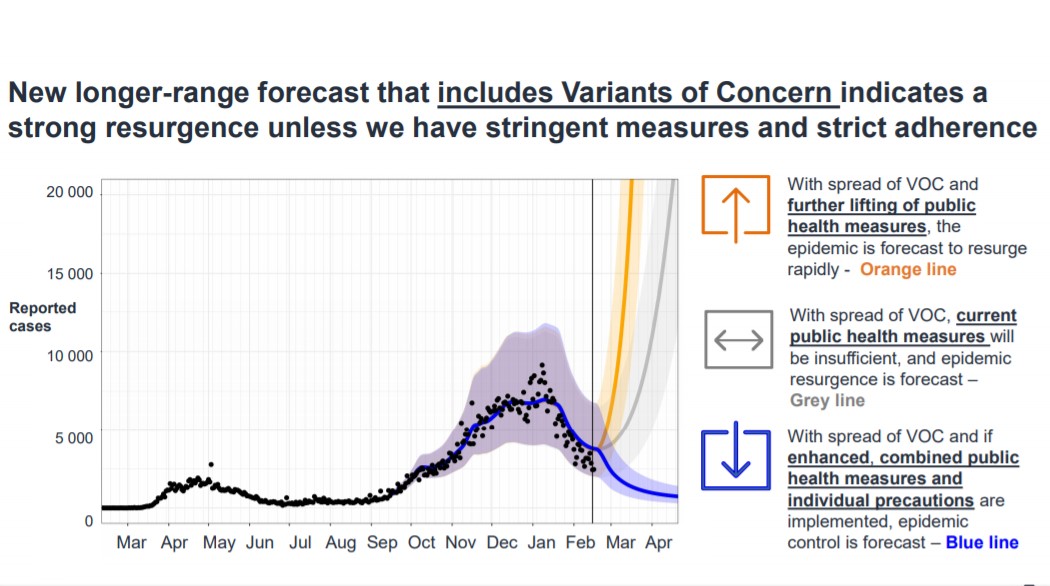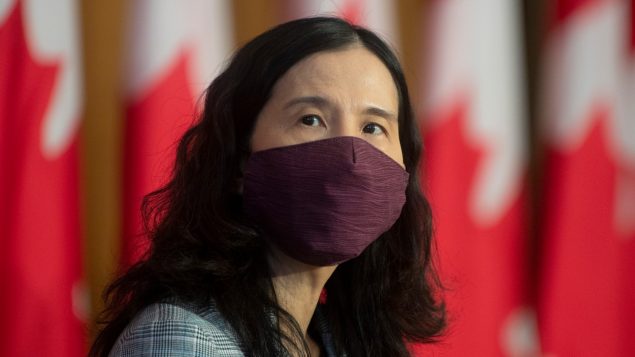While COVID-19 numbers have been steadily declining across the country for over a month, the spread of new variants of the virus could lead to a third and even bigger pandemic wave if stronger public health measures are not adopted, according to new federal modelling.
The stark warning from the Public Health Agency of Canada’s (PHAC) released on Friday comes as several provinces are pondering relaxing pandemic lockdown measures.
“With the emergence and spread of new variants of concern, we are cautioned that unless we maintain and abide by stringent public health measures, we may not be able to avert a re-acceleration of the epidemic in Canada,” said Chief Public Health Officer Dr. Theresa Tam during a virtual news conference on Friday.
“These variants have been smouldering in the background and now threaten to flare up.”
As of this week, there have been 704 cases linked to three variants of concern — the B.1.1.7 variant first identified in the U.K. (664 cases), the B.1.3.5.1 variant first identified in South Africa (39 cases), and the P.1 variant first traced to travellers from Brazil (1 case). Variant cases have been detected in 10 provinces and there is evidence of community spread in at least five, officials said.
Scientists believe these variants could be up to 50 per cent more transmissible. Recent modelling from Quebec and Ontario suggests they could become the dominant strains in the coming weeks.
Short- and long-term forecasts of the current strain of the virus variants show infection rates flattening and declining in the coming weeks, even if people maintain the current number of contacts they have each day. However, when the more contagious variants of concern are included in the modeling, projections show a dramatic spike in cases to 10,000 per day by the end of March, if the current level of restrictions are maintained.

(Source: Public Health Agency of Canada)
The modelling shows the epidemic curve will take an almost vertical trajectory to 20,000 cases per day by mid-March if public health restrictions are relaxed even further.
“To maintain our progress, we need to keep the pressure on the virus, apply what works with even more diligence,” said Dr. Howard Njoo, deputy chief public health officer.
“We still have a ways to go to see the widespread sustained decline of disease activity. We need to be confident we can bring the pandemic under strong control nationally.”
Speaking at his regular COVID-19 briefing in Ottawa, Prime Minister Justin Trudeau said the “threat of variants is real.”
“So we have to keep taking strong public health measures,” Trudeau said. “And remember, even with vaccines, we need to do everything we can to protect vulnerable populations like our seniors in long-term care. Otherwise we could see a third wave that is worse than the second or the first.”
With files from CBC News







For reasons beyond our control, and for an undetermined period of time, our comment section is now closed. However, our social networks remain open to your contributions.